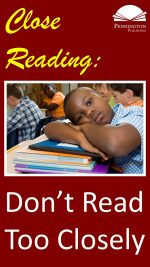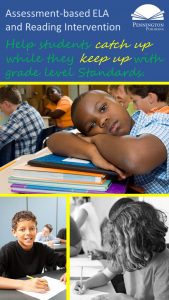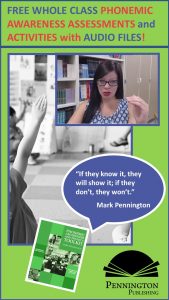Close Reading Narrative Worksheet
Close Reading? A helpful, time-tested reading strategy, which was brought back to life in 2009 with the advent of the Common Core State Standards and the evangelical zeal of Common Core lead authors of the English-language Arts Standards, David Coleman and Susan Pimental. For those still getting re-acquainted with close reading, this definition should suffice from noted U.C. Berkeley reading-rearcher David Pearson (now a constructive critic of how the close reading strategy is currently being implemented) and co-author Margaret Gallagher:
Close Reading of text involves an investigation of a short piece of text, with multiple readings done over multiple instructional lessons. Through text-based questions and discussion, students are guided to deeply analyze and appreciate various aspects of the text, such as key vocabulary and how its meaning is shaped by context; attention to form, tone, imagery and/or rhetorical devices; the significance of word choice and syntax; and the discovery of different levels of meaning as passages are read multiple times. The teacher’s goal in the use of Close Reading is to gradually release responsibility to students—moving from an environment where the teacher models for students the strategies to one where students employ the strategies on their own when they read independently
P. David Pearson and Margaret C. Gallagher, “The Instruction of Reading Comprehension,” Contemporary Educational Psychology 8, no. 3 (July 1983) 317-344.
Specifically, the first and last C.C.S.S. Reading Anchor Standards address the importance of close reading:
1. Read closely to determine what the text says explicitly and to make logical inferences from it; cite specific textual evidence when writing or speaking to support conclusions
drawn from the text.10. Read and comprehend complex literary and informational texts independently and proficiently
As Pearson now notes, “We need a mid-course correction with close reading.”
My criticism of the how a good reading strategy (close reading) needs revision is three-fold:
- Pre-reading strategies and pre-teaching are frowned upon in the new permutation of close reading. With our diverse student population, beginning a cold read or rigorous text borders on educational malpractice. Reading comprehension builds upon reading comprehension. The into reading step has a solid research base and can be teacher-led or student-researched. Now I’m not advocating a return to the counter-productive “Give students the Cliff’s Notes version of the reading prior to the first read” practice of the 1980s. We do want to promote Reading Anchor Standard 10 and its focus on developing reader independence.
- I do applaud the focus on text-dependent questions to analyze expository and narrative text (Who wants to return to the beyond reading focus of constructing one’s own meaning from the author’s words?); however, in addition to some teacher or publisher questions, we need to return to the emphasis of interactive reading based upon reader (self)-generated question strategies. We need to bring back talking to the text to improve reading comprehension and to develop independence. Even the best teacher-generated questions lead students to a skim to find the answers approach to reading.
- Again, I’m thrilled that the Common Core has renewed our focus on expository text. But, narrative has a place, too. And short selections of novels, as well as short stories, can serve as rigorous close readings. Close readings are not confined to articles. At the end of this article, I provide a FREE resource download of a Close Reading Narrative Worksheet.
Will These Mid-course Corrections Be Adopted?
Revision tends to take more time than wholesale change. Whether teachers will gradually buy into some of these mid-course corrections remains to be seen. We teachers can be an impatient bunch, and we often jump onto the bandwagon of new and improved education approaches which are neither new nor improved.
Most teachers have been in professional development settings in which the speaker advocated the necessity of gradual course changes. The speaker may even have trotted out the example of how long it takes an aircraft carrier (or a cruise ship) to turn around in the middle of the ocean. I looked up this metaphor and found an interesting response from naval seaman assigned to the carrier, George W. Bush. This quote bears reading closely. He responds to the question of how long it takes a carrier to make a 180 degree turn (emphasis mine):
Few people will notice 1 degree per second which is easy to do at 30 kts, so 180 degrees would take about 3 minutes and operations could continue. This is a very realistic answer as the carrier must counter sea currents which may need 1 degree/sec of rudder. If nothing is loose on deck, MUCH more agressive [sic]turns can be taken as the deck will tilt 30 degrees into the turn. Anything not tied down will roll off into the ocean, i.e. equipment, airplanes, people, etc, and no planes could land or take off with such a turn in progress. These turns are done on first sea trials to prove that the rudder can handle the stress of a tight turn at max speed. Here I would estimate a full U turn (180 degrees) in well under 60 seconds, probably 30 seconds, but you’d want to hold onto something.
Now that we’ve finished our first close read, most of us found the main ideas and key details and were able to answer the BIG question: How long does it take an aircraft carrier to turn around?
Let’s do our second close read, looking for craft and structure…
The naval seaman crafts his answer beginning with the usual and moving to the extraordinary. He moves from the impersonal “Few” in the first sentence to the personal “you’d” in the last. He uses two cause and effect structures: the first being the slow turn and its results; the second being the fast turn and its results.
Let’s do our third close read and mark up the text with marginal annotations, preparing to apply, discuss, and properly cite the information…
KEY RESULTS OF FAST TURN “Anything not tied down 1. will roll off into the ocean, i.e. equipment, airplanes, people, etc, and 1. no planes could land or take off with such a turn in progress” (Jones).
My take regarding the mid-course corrections of the close reading strategy is that a slow turn will produce greater long-term effects than a fast turn and will produce fewer casualties. We’ve made some significant progress in improving reading instruction during the last decade. Far fewer elementary and secondary teachers are solely teaching novels. Less class time is now devoted to unguided, free choice independent reading. More time is now spent on expository reading and research. Less whole language strategies, a.k.a. reader response, which focus on filtering and applying the ideas of text through the lense of personal reader experiences, are being taught, such as with dialectical journals. I’d hate to see close reading change into a passing fad (as it has before in the 1960s).
Teachers do need to pre-teach (the “into step” of reading) and/or have students pre-research the topic (if an expository close reading) or the author, context and/or genre (if a narrative close reading), especially with rigorous reading-level close readings. Having students access prior knowledge and gap-filling with our diverse learners via pre-teaching strategies (Marzano) improves comprehension and does not turn our students into teacher-dependent learners. Indeed, comprehension builds upon comprehension and enables students to independently access text. The reading research of the last sixty years is quite extensive regarding the positive impact of pre-reading strategies.
Get the Close Reading Narrative Worksheet FREE Resource:
![]()
*****
The Science of Reading Intervention Program
The Science of Reading Intervention Program: Word Recognition includes explicit, scripted, sounds to print instruction and practice with the 5 Daily Google Slide Activities every grades 4-adult reading intervention student needs: 1. Phonemic Awareness and Morphology 2. Blending, Segmenting, and Spelling 3. Sounds and Spellings (including handwriting) 4. Heart Words Practice 5. Sam and Friends Phonics Books (decodables). Plus, digital and printable sound wall cards, speech articulation songs, sounds to print games, and morphology walls. Print versions are available for all activities. First Half of the Year Program (55 minutes-per-day, 18 weeks)
The Science of Reading Intervention Program: Language Comprehension resources are designed for students who have completed the word recognition program or have demonstrated basic mastery of the alphabetic code and can read with some degree of fluency. The program features the 5 Weekly Language Comprehension Activities: 1. Background Knowledge Mentor Texts 2. Academic Language, Greek and Latin Morphology, Figures of Speech, Connotations, Multiple Meaning Words 3. Syntax in Reading 4. Reading Comprehension Strategies 5. Literacy Knowledge (Narrative and Expository). Second Half of the Year Program (30 minutes-per-day, 18 weeks)
The Science of Reading Intervention Program: Assessment-based Instruction provides diagnostically-based “second chance” instructional resources. The program includes 13 comprehensive assessments and matching instructional resources to fill in the yet-to-be-mastered gaps in phonemic awareness, alphabetic awareness, phonics, fluency (with YouTube modeled readings), Heart Words and Phonics Games, spelling patterns, grammar, usage, and mechanics, syllabication and morphology, executive function shills. Second Half of the Year Program (25 minutes-per-day, 18 weeks)
The Science of Reading Intervention Program BUNDLE includes all 3 program components for the comprehensive, state-of-the-art (and science) grades 4-adult full-year program. Scripted, easy-to-teach, no prep, no need for time-consuming (albeit valuable) LETRS training or O-G certification… Learn as you teach and get results NOW for your students. Print to speech with plenty of speech to print instructional components.
Click the SCIENCE OF READING INTERVENTION PROGRAM RESOURCES for detailed program description, sample lessons, and video overviews. Click the links to get these ready-to-use resources, developed by a teacher (Mark Pennington, MA reading specialist) for teachers and their students.
Get the SCRIP Comprehension Cues FREE Resource:
Get the Diagnostic ELA and Reading Assessments FREE Resource:
*****











